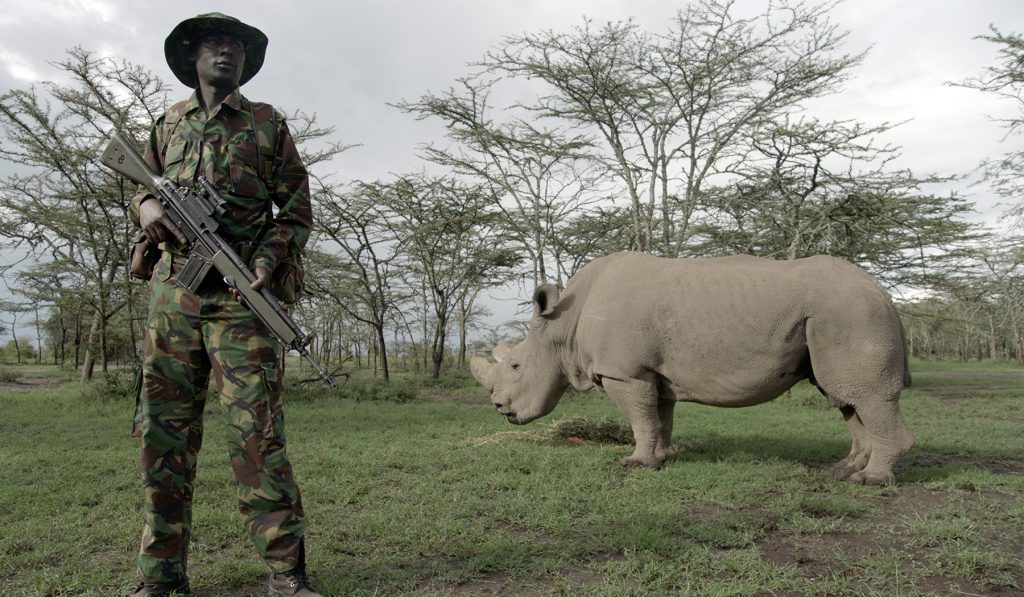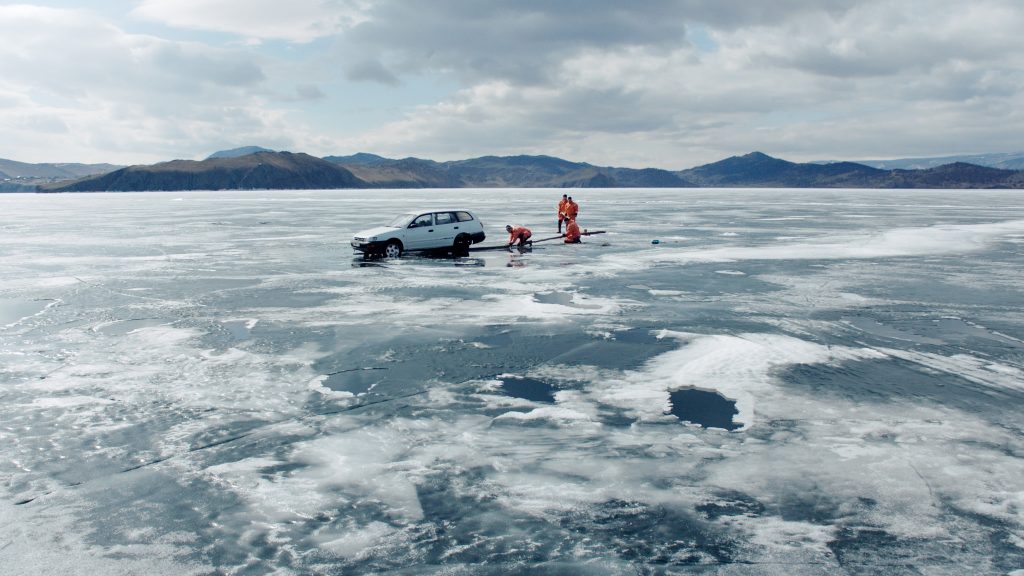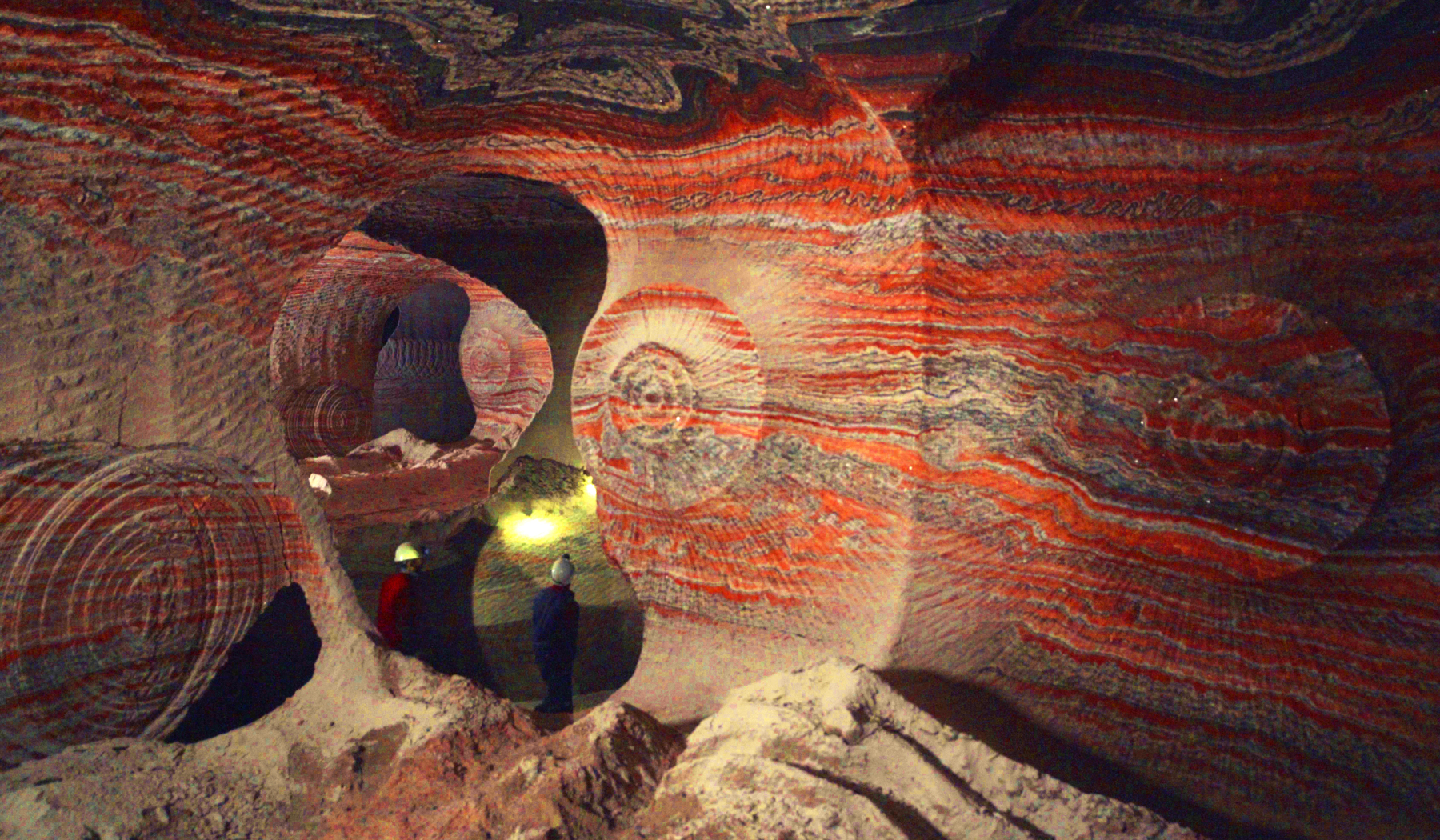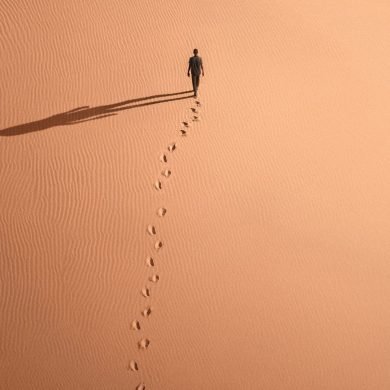But no, the arrogance of mankind states that we hold dominion over all, and in turn, that means that everything that exists on this planet is for us, and us alone. Anthropocene: The Human Epoch paints a horrifying picture of the state of the world, portraying this planet we call Earth as a grand ouroboros that will eventually defeat itself in the battle of self-defeating purposes. In an awe inspiring manner, this film, when writ large on a cinema screen, is a glorious sight to behold. Fields of burning elephant tusks entice as dark smoke fills the sky and unsettling orange and red laps at the remnants of these elegant beasts, all the while a time lapse shot of the ever diminishing Great Barrier Reef is startling to look at, yet disturbingly mesmerising, and when these images are paired with mountains of rubbish and disturbed plastic, where both people and scavenging birds alike peruse the rubble like they’re shopping for milk and bread, we can’t help but take away the notion that the destruction of earth carries an eerie beauty to it.
And what kind of notion is that? What kind of disturbing realisation is that? I’m reminded of Samantha Morton’s Hazel in Synecdoche, New York, standing in her house of fifty years, an abode that has been continually on fire, and her complete ambivalence to the scenario she finds herself in. As we stand in the kitchen while our houses burn down, drinking a glass of water and peering at the disintegrating curtains, we can’t help but comment on how beautiful it looks. I’m unsettled that after the mournful and depressing imagery on display in Anthropocene, the one thought I have taken from it is, ‘yeah, it’s sad, but it sure is darn pretty looking’.


Which in itself is a question that can’t help but be asked at the end of the film – at what price beauty? Those 20,000 burning elephant tusks exist as a reminder that they came from 10,000 elephants. What would 10,000 elephants look like? Would 10,000 elephants, in one place, be treated the same as the koalas on Kangaroo Island, or the cormorants in Acid Forest? Would they, if left to flourish, would they be treated as scurge if their numbers were deemed to put them into the realm of ‘overabundance’?
For those who created businesses on the foundations of ivory, they have found a grand opportunity as the death of the world rolls on – mammoth tusks. As the great fields of ice in Russia start to melt and the sea levels rise, creatures from long ago, once captured in stillness, are emerging into the world as golden opportunities. The desire for ivory still exists, so why not monopolise the wealth of long dead mammoths and use them instead for the endless array of expensive art that will adorn the walls of the wealthy? The question that nobody is asking appears to be that of: what use are the bodies of the dead if they can’t be used for glory and beauty? Such is the selfishness of mankind that we can’t help but turn these ancient beasts into artistic figures that celebrate mankind itself. This is without even touching on the endless mine of pristine marble, dragged out of the earth just to create replications of the statue of David, itself a black hole of creativity, encouraging imitation rather than originality.
And yet, this failure to transition away from industries or jobs that directly harm the world we live in might be a good enough reason why we shouldn’t be in awe of the artistic ability of the ivory artists. The pride that workers take in the familial lineage of world destroying jobs that they occupy should be disturbing, but when there is no alternative of employment due to the remoteness of where they live, should we damn them from afar because of their fate? If the governments of the world can’t help but encourage mass destruction of the Earth under the guise that it’s for the ‘betterment’ of mankind, then why should we damn those who are forced to live under such ruling? The mines in Russia are like endless wormholes that end up nowhere, gathering valuable dirt just so they can power themselves. Even the ‘ecological’ and ‘green’ alternative that is supposed to help ferry us away from our climate change sealed fate is almost as caustic and harmful as what we were already producing.
But, like the cars that race across the ever thinning ice in the middle of nowhere, knowing that under their feet is the possibility of certain doom, we simply can’t help ourselves. In Aquarela, the chaotic destruction of earth is realised through the perspective of the bodies of water that litter this planet. These ever rising waters are hostile to humanity, creating one of the few realms on this planet that we cannot successfully conquer – although we are trying our best with the ceaseless stream of trash that we fill the oceans with, and the endless plundering of aquatic life from the seas that we fill our arthritic capsules with.
As the film opens, we witness the retrieval of a submerged car body. Archaic looking tools of sticks and ropes are twirled and twined together to drag the car to the surface. It’s clear that this is a common occurrence for Russia’s Lake Baikal. In another shot, we see one of these car carcass rescuers shouting at another car as it races across the ice flats that they’re going to sink as the ice is unstable. As if to himself, or to the camera, he states, ‘they can’t hear me’, and then moments later, the car disappears under the ice.
And in this short moment there has never been a better representation of the idiocy of humanity: a car taking a short cut across treacherous ice, knowing full well that they are likely to not make it across, only for some far off stranger to shout at them telling them that they are wrong. We push on, eager for our own gain, blind about our own destruction, earnest with our wilful ignorance.
It’s then genius that director Viktor Kossokovsky presents the imagery within Aquarela with the glorious backing of a rock opera score. It’s an overwhelming pairing of a cacophony of sound and a deluge of imagery that submerges you under the power of water. The icebergs crack like the world is being split in two, pushing boat tipping waves of debris through the waters. There is something that so purely draws from the well of anarchy about water, with its destructive qualities also being equally restorative.
As a stark contrast of the caustic imagery in Anthropocene, the various displays of water within Aquarela are calming, reassuring, and a welcome reminder that once humanity is gone from this earth, this unknowing energy will wash away almost everything we have done, allowing whatever comes after us to start this world anew. What kind of hope is that? Hope that one day we will cease to exist and our endless self-adoration will finally be gone, allowing some other entity to take our place?
In one shot, through hurricane devastated Miami, a boat passes an unlikely group of animals – dogs, pigs, maybe a goat – standing on an abandoned house porch. Their eyes watch and observe the destroyed land that they stand on. Their faces suggest that they are asking, why has this happened, when will it stop, when will these people be gone, and most importantly, will we ever be saved from this chaos that reigns around us?


All three of these documentaries work as a powerful rebuttal to the optimists around the world that suggest that there is still hope in humanity. While Damon Gameau’s positive, aspirational 2040 shows that there is hope around the world, that change is occurring for the better of the world and humanity, it’s hard not to look at the evidence proposed in Acid Forest, Anthropocene: The Human Epoch, and Aquarela, and wonder whether that hope is misplaced? While Damon has no choice but to rely on hope for the future his daughter will be living in, the optimistically pessimistic citizens of the world can sit here and scoff about how doomed we all are. There is little joy within these films – even if they have all have their own darkly comedic moments – but there is a realisation of just how destructive we are.
This trilogy of human conjured terror was never conceived to work in harmony – these are all separate projects that I have viewed in a short period of time together at Perth’s Revelation Film Festival – but when viewed together, you can’t help but see the grand portrait that they weave: we are the harbingers of our own destruction and extinction, and we are gleefully heading down this path with supreme gusto.
Acid Forest
Director: Rugilė Barzdžiukaitė
Anthropocene: The Human Epoch
Directors: Jennifer Baichwal, Edward Burtynsky, Nicholas de Pencier
Aquarela
Director: Viktor Kossokovsky




